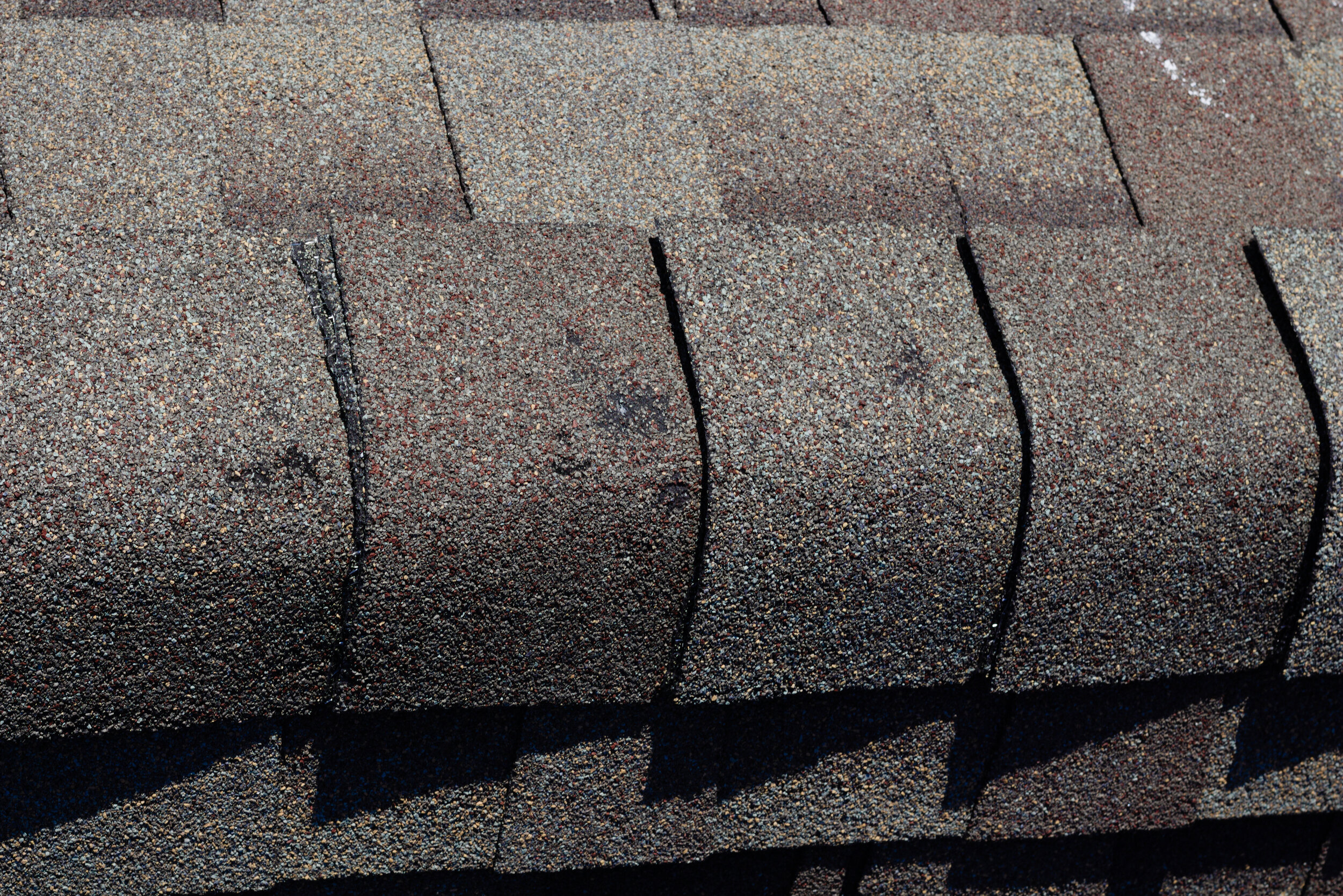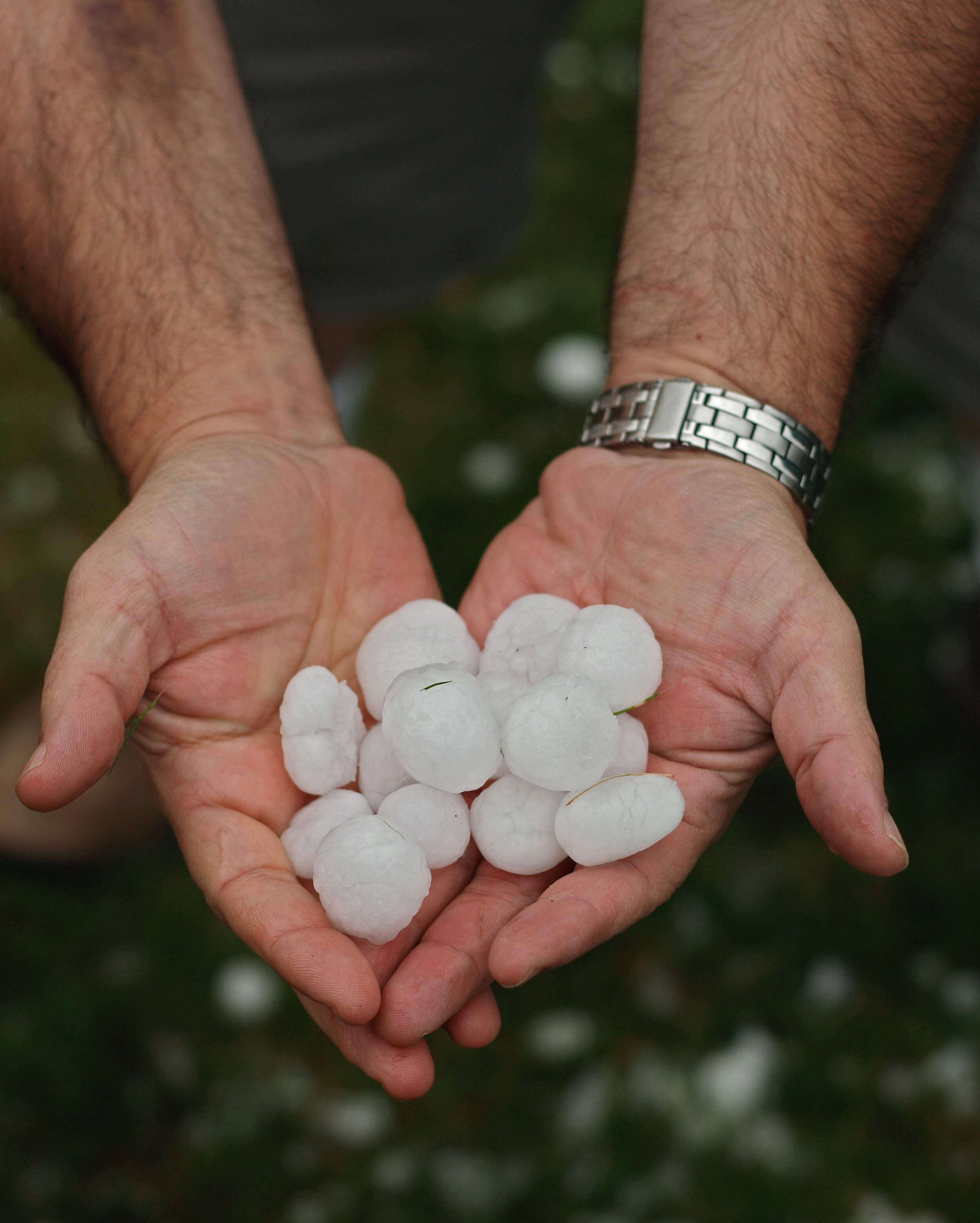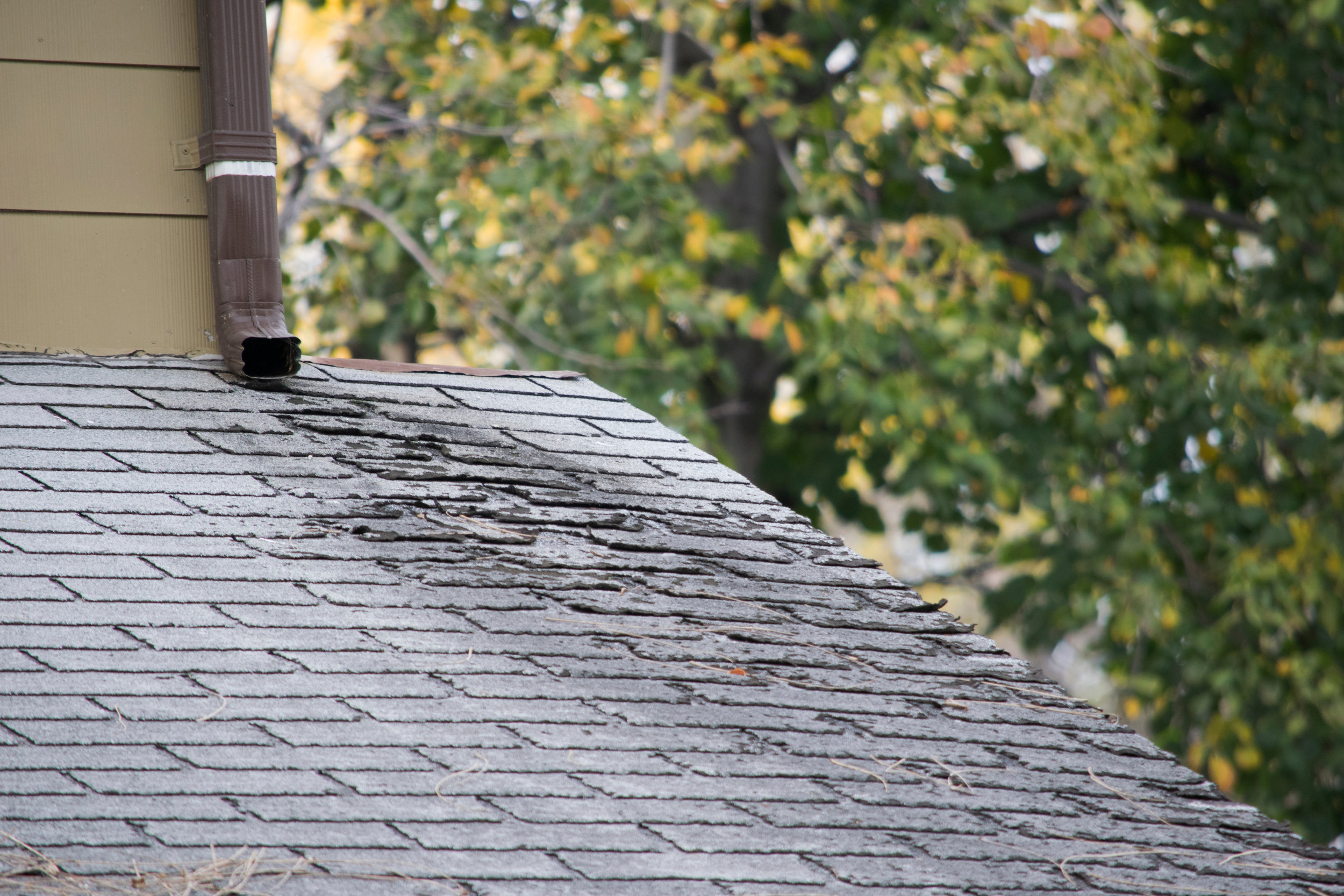Identifying And Repairing A Hail Damaged Roof
A Hail Damaged Roof
Good roofing shingles are designed to protect the home’s roofing system. But, a healthy roof can become compromised quickly after a hail storm.
In certain areas of the US that are susceptible to this type of damaging weather, it’s important that contractors and homeowners are able to identify and quickly repair any roof hail damage to prolong the life of the roof system and minimize any potential damage from the storm.
Although many hail storms produce small, pea sized hail pellets, it is also possible that a storm might produce much larger hail sizes that could range from 1/4 inch or smaller, up to 3 to 4 inches in diameter!
At first, it may seem like a quick passing storm wouldn’t cause much damage, nevertheless it’s important to inspect the exterior of the home and potentially the roof to identify any possible long term issues that could arise.
Big Hail Stones From A Large Storm
From The Ground Level: Identifying A Hail Damaged Roof
After a storm, it’s important to remember to check the perimeter of your home for evidence of hail damage.
Before worrying too much about any damage that might have been done to your roof, consider checking the perimeter of your home for any obvious damage to the outside.
Although a quick storm may not seem detrimental to a roof’s stability, even a short pounding with small to mid-sized hail pellets can weaken a roof and cause big problems like the potential for immediate or future leaks, rot, and dangerous mold.
Around the perimeter of your home keep an eye out for dings, dents, or marks on:
Mailboxes
AC Units
Windows
Fencing
Driveway
Cars
Siding
Garage Doors
If any of the above seems to have been compromised by a passing hail storm, its probably best to check your roofline.
From The Roofline: Identifying A Hail Damaged Roof
We do not recommend getting on your roof to assess hail damage.
Rather we highly recommend consulting a roofing professional who can both assess any damage and, if necessary, recommend a solution to prevent any further damage to the roof, or the interior of the home.
Once the exterior of the home has been examined and it’s been determined that there is the potential for hail damage to the roofline, keep an eye out for distinguished markings that will lead us to diagnose the damage, and offer some insight in to what will need repair.
This includes all types of roofing materials like asphalt, metal, clay, solar, slate, concrete, and wood.
Damaged Roof Shingles/Materials
Bruised/Dark Spots
Dimpled
Dented
Cracked
Split
Curled
Chipped
Loss of/degraded mineral granules in asphalt shingles
Dented or damaged gutters or leaf guards
Cracked, dented or askew roof vents or chimney covers
Dinged or cracked skylights
Dented Flashing
To determine if a portion of your roof requires repair, rub a piece of sidewalk chalk on suspected shingles or metal roofing materials. If the chalk highlights a bruised, dinged, or dented appearance, that portion of the roof will require repair and further inspection.
Often, the surrounding roofing sections can be effected by the damaged portion of the roof. So it’s very important to have both the hail damage roof section, and its neighbor sections examined by a professional.
Dents or dimples in your asphalt shingles may not seem like or even require immediate replacement, but they will certainly affect the longevity of a fully functional roof.
Warped Roof Shingles
Hail Damage Repair
It’s important to have your roof assessed by a professional, and repaired quickly to avoid any further damage from rain, hail or snow.
Short and long term weathering of the roof shingles will lead to warping, which will in-turn effect the roof’s ability to properly manage run-off water.
If water is not properly funneled from the roof shingles to the gutters and away from the foundation, it can easily leak through the shingles and in to the roofing system, or pool near the foundation.
Your home owners insurance should cover most of the damage to your roofline from these intense storms. But, check your individual homeowner policy to be sure.
A quick inspection from a licensed roofer should determine the course of action needed to appropriately repair the damaged sections of the roof.
Assuming the roof is in reasonable condition prior to the incurred damage, small sections can easily and quickly be repaired, but if left unattended this will lead to bigger problems down the line.
Shingle Granules
Once your roofing contractor has determined that there is in fact damage to the shingles, it’s important to begin asking questions about the lifespan of the entire roof.
Also keep in mind that once the protective mineral granules embedded in asphalt shingles are significantly disturbed or begin to degrade, the integrity of the roof is called in to question. Leaks, mold and water damage are now much more likely.
Granules are the rough grit embedded on shingles. They are added to the shingle by the manufacturer for several reasons.
Fire resistance
As “sunscreen” for the harmful UV rays
Simply for design
Granules can wear off or chip away from shingles for the following reasons:
Hail damage
Everyday wear and tear
Blistering (excessive heat and poor ventilation in the roofing system)
Foot Traffic / Walking On The Roof
Defective Product
Check gutters for granule run off. Too much granule build up in the gutters could mean that your shingles are aging improperly.
If you’re having a roof inspected due to a recent hail storm, be sure to ask your contractor if they suspect additional damage may be occurring for reasons aside from just hail.
It’s important for your roofing contractor to identify any potential issues after a damaging hail storm and remedy them quickly. Waiting, or worse ignoring the signs of a damaged roof will only cause more issues and more money down the road.



